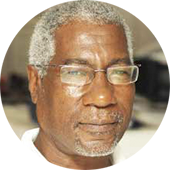
The global economy is in veritable tatters and nations rich and poor, big and small, everywhere, are reeling under unprecedented economic pressures.
Yet, without new revenue sources and facing the same imported inflation as all other small island developing nations, Saint Lucia is bearing the brunt — and breathing better than most.
The World Bank’s latest Global Economic Prospects report, released January 10, acknowledges growth is slowing sharply North and South, thanks to “elevated inflation, higher interest rates, reduced investment” and disruptions caused by the 11-month-old Ukraine war.
The Washington-based entity actually predicts small developing states and island nations like Saint Lucia and the rest of the Caribbean Community (CARICOM) will continue to bear the brunt and fare the worst over the next two years, as they’ve done since COVID-19 arrived in 2020.
The bank says global growth will slow-down in 2023 to 1.7% from the 3% expected six months ago, marking the first time in more than 80 years that two global recessions will have occurred within the same decade.
Its earlier forecasts for 2023 “were revised down for 95% of advanced economies and nearly 70% of emerging market and developing economies.”
That included cutting its 2023 Caribbean growth forecast from 2.9% to 1.7% after the risks it identified six months ago all materialized.
But it also predicts the global economy will grow by 2.7% in 2024.
In 2023 and 2024, the bank says, “per-capita income growth in emerging market and developing economies is projected to average 2.8% — 1% lower than the 2010-2019 average.”
The report highlighted the dilemma of 37 small states (defined as “countries with a population of 1.5 million or less” and including most CARICOM member-states) “which suffered a sharper COVID-19 recession and a much-weaker rebound than other economies, partly because of prolonged disruptions to tourism.”
It also says, “growth in emerging market and developing economies is expected to decelerate from 3.8% in 2022 to 2.7% in 2023, reflecting significantly weaker external demand compounded by high inflation, currency depreciation, tighter financing conditions, and other domestic headwinds.”
The bank predicts that “by the end of 2024, GDP levels in emerging and developing economies will be roughly 6% below levels expected before the pandemic.”
It says Latin American and Caribbean (LAC) economies grew by an average 3.6% in 2022, but the wider region’s economies will decelerate sharply to 1.3% in 2023 before recovering somewhat to 2.4% in 2024.”
And while the bank expects the Caribbean “to see firmer expansion at 5.6% in 2023,” it also forecasts “staggering living standards in the first half of the 2020s (up to 2025), with average per capita GDP growth of 0.6% per year over 2020-2024.”
Guyana (57.8%) has again registered the highest growth rate in CARICOM in 2022 and is projected to be the only country in the LAC region to record double-digit growth in the next two years — 25.2% in 2023 and 21.2% in 2024.
In the entire LAC region, however, the bank says economies’ growth will slow down to 1.3%, thanks to inflation and high interest rates, while the Caribbean, after 7.7% in 2022, will slow-down to 5.6% in 2023 and 5.7% in 2024.
Aside from Guyana, “the sub-region faces renewed headwinds,” the bank says.
It also says despite Caribbean tourism’s revitalization in 2022 “after the harsh COVID-19 lockdowns ended, renewed challenges include tighter financing conditions expected to constrain investments.”
Consequently, it adds, “it will be harder for many islands to roll-over debt and finance large fiscal and current account deficits.”
None of the above spells well for any government anywhere, but Saint Lucia has reason for hope – at least for the next two years.
The Economic Commission for Latin America and the Caribbean (ECLAC) and the island’s Finance Ministry project for 5% to 7% economic growth in 2022, lower than the 8.9% earlier estimated by the World Bank, but better than many of its Caribbean neighbours.
Prime Minister Philip J. Pierre indicated in his 2023 New Year address that due to his administration’s prudent handling of the nation’s finances, 2022 saw the economy “on a better footing” than 2021 and “we have entered 2023 with renewed optimism for the prospects of our economic growth.”
He said his government has delivered many of the ruling Saint Lucia Labour Party’s (SLP) campaign promises and made in his maiden Budget Address in April 2022.
“Most importantly,” he said, “we have nurtured the economy back from an unsustainable and potentially destructive path and have laid the foundation for renewed growth.’
The PM said the country had attracted “solid and dependable investments” in tourism ($320 million between January and August 2022) and “stopped the irresponsible and reckless spending, primed and stimulated the economy to keep it afloat and stabilized the country’s finances.”
With most of his regional and international peers delivering less-favorable reports and projections as 2023 starts, the Saint Lucia leader reported positively on plans for delivering on time, as promised, regarding: completion of the Hewanorra International Airport (HIA) and St. Jude Hospital expansion and reconstruction projects, expansion of the Castries and Soufriere seaports, establishment of the Youth Economy Agency (YEA) and introduction of Universal Health Care (UHC).
He also disclosed that as of January 2023, workers earning up to $25,000 per year won’t pay Income Tax — to the benefit of 10,000 to 14,000 workers, who will now have an additional $12 million to $14 million more in disposable income.
All that, in addition to the government continuing to subsidize flour and sugar, cooking gas and petrol — and increasing benefits for the most-needy, in keeping with the administration’s patented mantra of ‘Putting People First’.
As also indicated in the World Bank and ECLAC reports, PM Pierre noted: “The stark reality is that there are economic challenges being experienced the world over” and his government “has been responding with limited resources to combat globally-imported inflation, while at the same time growing the economy.”












